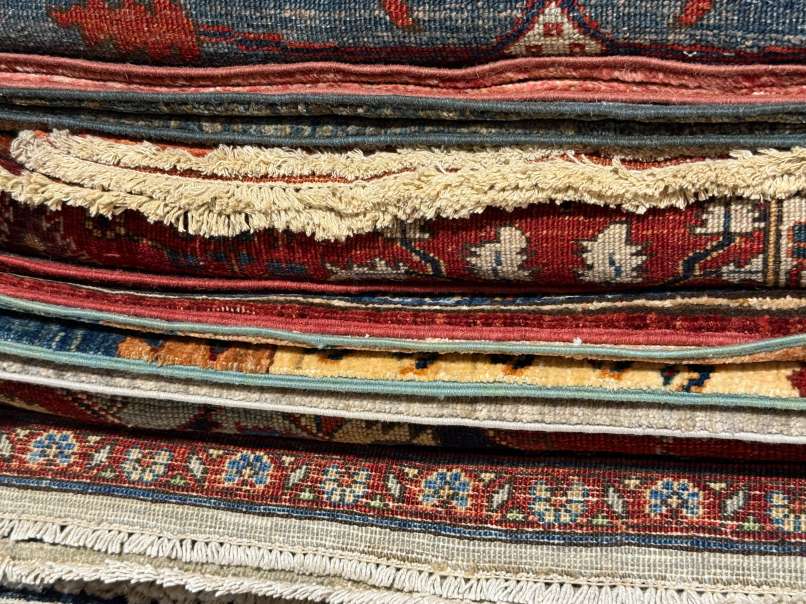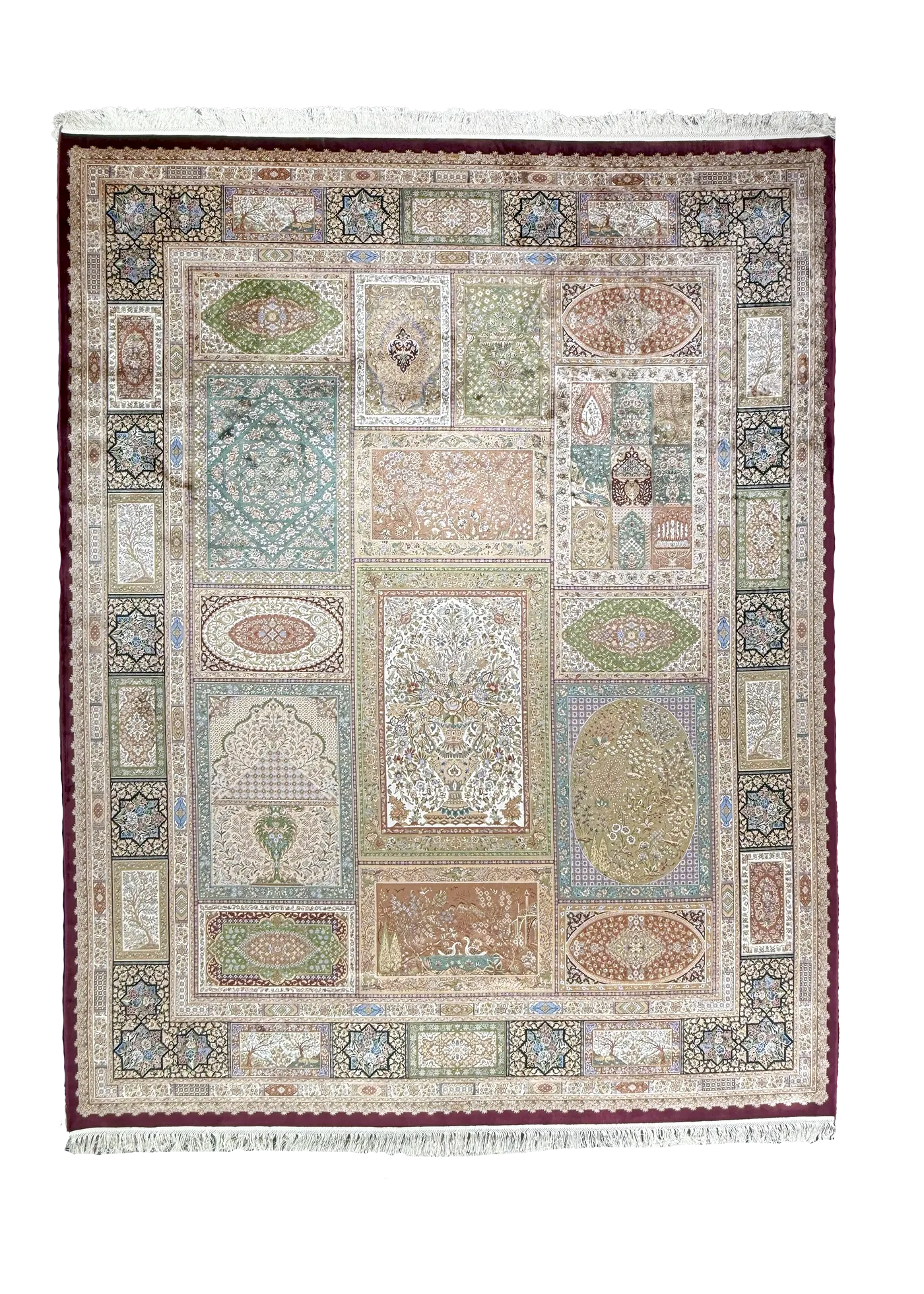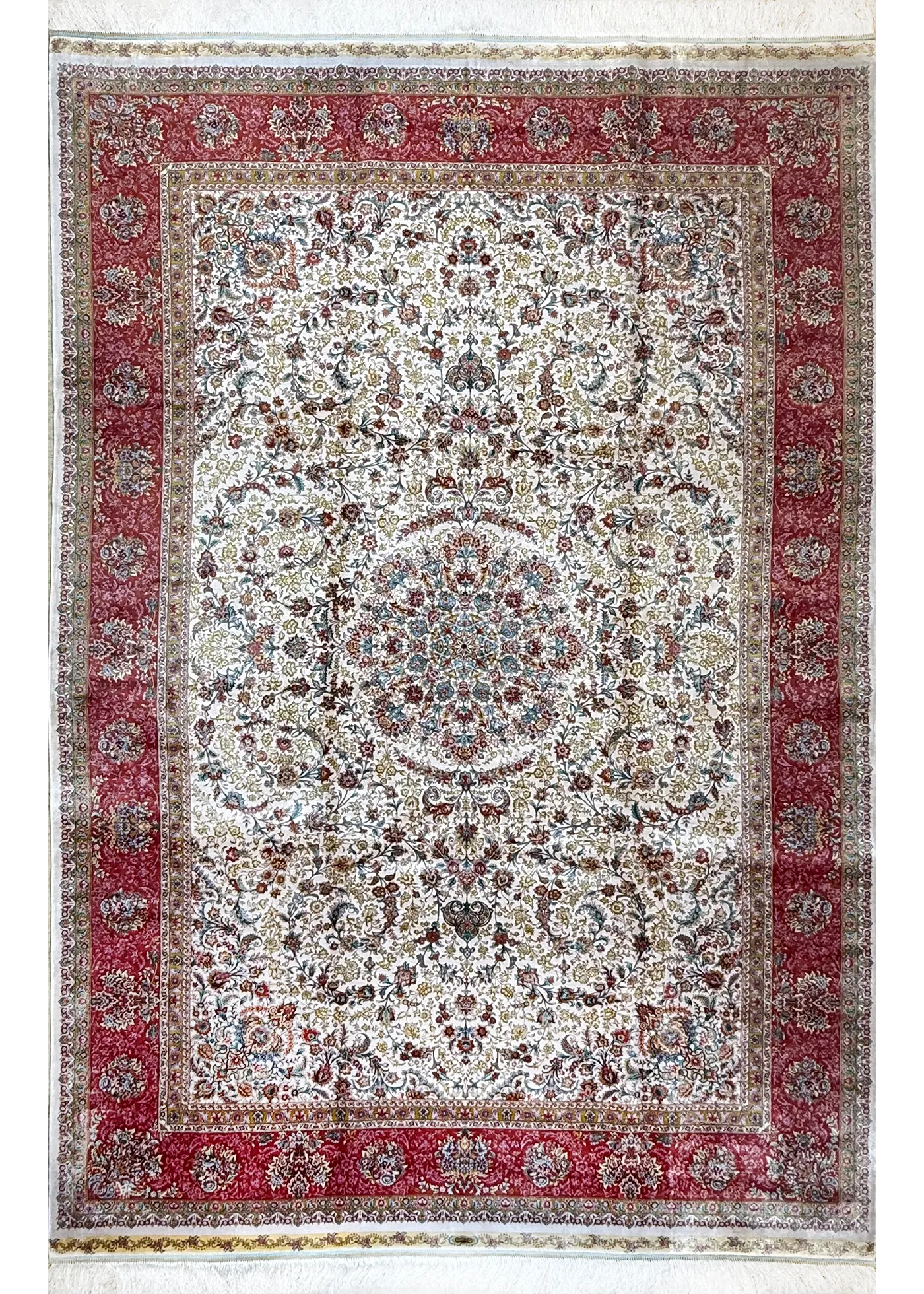Are Persian Rugs Worth Anything? Unraveling Their Timeless Value

Introduction: A Tapestry of Timeless Worth
Step into a room where a silk Persian rug lies gracefully, its intricate patterns weaving tales of ancient artisans. Persian rugs have enchanted admirers for centuries, gracing palaces, homes, and museums with their elegance. But are Persian style rugs truly worth anything? Beyond their visual allure, these textiles carry profound historical, cultural, and artistic value that endures through time. In this exploration, we’ll uncover why Persian rugs remain treasures, from their origins in ancient Persia to their place in modern collections. Along the way, discover how Afra Rugs’ Traditional Persian Rugs Collection brings this legacy to your home, offering timeless designs for a touch of luxury. Let’s dive into the threads that make Persian rugs so extraordinary.
The Historical Value of Persian Rugs
The legacy of Persian style rugs stretches back over 2,500 years to ancient Persia, now modern-day Iran, where nomadic tribes wove textiles for both function and beauty. These early rugs served as floor coverings, wall hangings, and saddlebags, but they were also expressions of creativity. By the Safavid dynasty (1501–1736), Persian rug weaving became a refined art, with workshops crafting masterpieces for royal courts and international trade. The Ardabil Carpet, preserved at the Los Angeles County Museum of Art, exemplifies this era with its intricate medallion design, a marvel of symmetry and color.

Safavid Carpet Fragment, 16th Century Caption: A silk Persian rug with floral motifs, showcasing Safavid artistry. Credit: Image courtesy of The Metropolitan Museum of Art, CC0
“Persian carpets are masterpieces of technical skill and aesthetic refinement,” notes the Metropolitan Museum of Art. This historical significance elevates the worth of Persian rugs, as they embody centuries of artistry. From the Achaemenid Empire to the Silk Road, these rugs carried Persian aesthetics worldwide, leaving a lasting mark. Their presence in museum collections, like those at the Victoria and Albert Museum, underscores their value as historical treasures.
The meticulous weaving process, often spanning months, adds to their worth. Afra Rugs’ Traditional Persian Rugs Collection draws inspiration from these historical designs, offering a modern way to celebrate this heritage. Each rug, whether from a royal workshop or a contemporary studio, carries the weight of history in its patterns.
Artistic and Cultural Worth of a Silk Persian Rug
The artistic value of a silk Persian rug lies in its breathtaking craftsmanship. Persian rugs are celebrated for their intricate designs—floral motifs, geometric shapes, and central medallions—that reflect regional styles like Tabriz, Kashan, and Isfahan. Silk, valued for its sheen and ability to hold fine details, enhances these patterns, creating rugs that glow with elegance. “Silk pile adds a luminous quality to the intricate patterns of Persian carpets,” observes the Metropolitan Museum of Art.
Culturally, Persian rugs are rich with meaning. Motifs like the boteh (paisley) symbolize fertility, while tree-of-life designs evoke eternity. In Persian homes, rugs were cherished heirlooms, passed down as emblems of tradition. Their cultural significance is recognized globally—UNESCO’s Intangible Cultural Heritage list honors traditional Persian carpet weaving for preserving artistic legacy. This cultural depth adds intangible value, making a Persian style rug a link between past and present.
Afra Rugs’ Traditional Persian Rugs Collection captures this artistry with designs inspired by traditional patterns, offering a way to bring cultural elegance into your space. These rugs honor the spirit of Persian craftsmanship, inviting you to connect with a timeless tradition.
Factors Influencing Modern Appreciation of Vintage Persian Rugs
Today, vintage Persian rugs are admired for their rarity and authenticity, though Afra Rugs focuses on contemporary designs rather than vintage pieces. Several factors drive their modern worth. First, age and condition are key—rugs from the 19th century or earlier, like those in the Victoria and Albert Museum’s collection, are valued for their historical context. Their natural dyes, made from plants like madder and indigo, create colors that deepen over time, enhancing their charm.
Second, regional styles shape appreciation. Kashan rugs, with their floral medallions, or Tabriz rugs, known for intricate curvilinear patterns, carry distinct identities that enthusiasts treasure. Interior design publications like Architectural Digest praise their versatility, noting how a Persian style rug can anchor a minimalist room or elevate a bold space [Architectural Digest. This adaptability keeps them relevant in modern homes.
Finally, the global appreciation for heritage craftsmanship boosts their worth. Museums like The Getty display Persian rugs as fine art, alongside paintings and sculptures. Afra Rugs’ Traditional Persian Rugs Collection offers designs inspired by these timeless styles, blending tradition with contemporary elegance. The enduring appeal of Persian rugs lies in their ability to transcend trends, making them cherished additions to any home.
Persian Rugs in Global Collections
The presence of Persian style rugs in renowned collections highlights their universal value. The Los Angeles County Museum of Art’s Ardabil Carpet, woven in 1539–40, is a global icon, showcasing Persian artistry to the world. “The Ardabil Carpet is a pinnacle of design and craftsmanship,” states the Victoria and Albert Museum, which also houses a twin of this masterpiece.

Ardabil Carpet Detail Caption: Detail of a Persian style rug, the Ardabil Carpet, a masterpiece of symmetry. Credit: Image courtesy of Victoria and Albert Museum
Private collections also reflect their worth. Designers featured in Elle Decor often incorporate Persian rugs into eclectic interiors, proving their timeless appeal. Whether in a Parisian loft or a London townhouse, these rugs elevate spaces with their stories. Afra Rugs’ Traditional Persian Rugs Collection draws on these design principles, offering a way to own a piece of this legacy.
The global reverence for Persian rugs—seen in museum exhibits and design trends—affirms their worth as more than decor. They are artifacts of human creativity, weaving together history, art, and culture in every thread.

Ardabil Carpet, A Star Takes Center Stage
Conclusion: The Enduring Legacy of Persian Rugs
So, are Persian style rugs worth anything? Without a doubt. Their value lies in their ability to carry centuries of history, artistry, and culture. From ancient Persian courts to modern homes, rugs like a silk Persian rug or vintage Persian rugs remain symbols of craftsmanship and tradition. They invite us to connect with the past while enriching our present, transforming spaces into stories. At Afra Rugs, we celebrate this legacy with our Traditional Persian Rugs Collection, where timeless designs bring elegance to your home. Explore our collection today and find a rug that’s more than decor—it’s a treasure woven with meaning.





